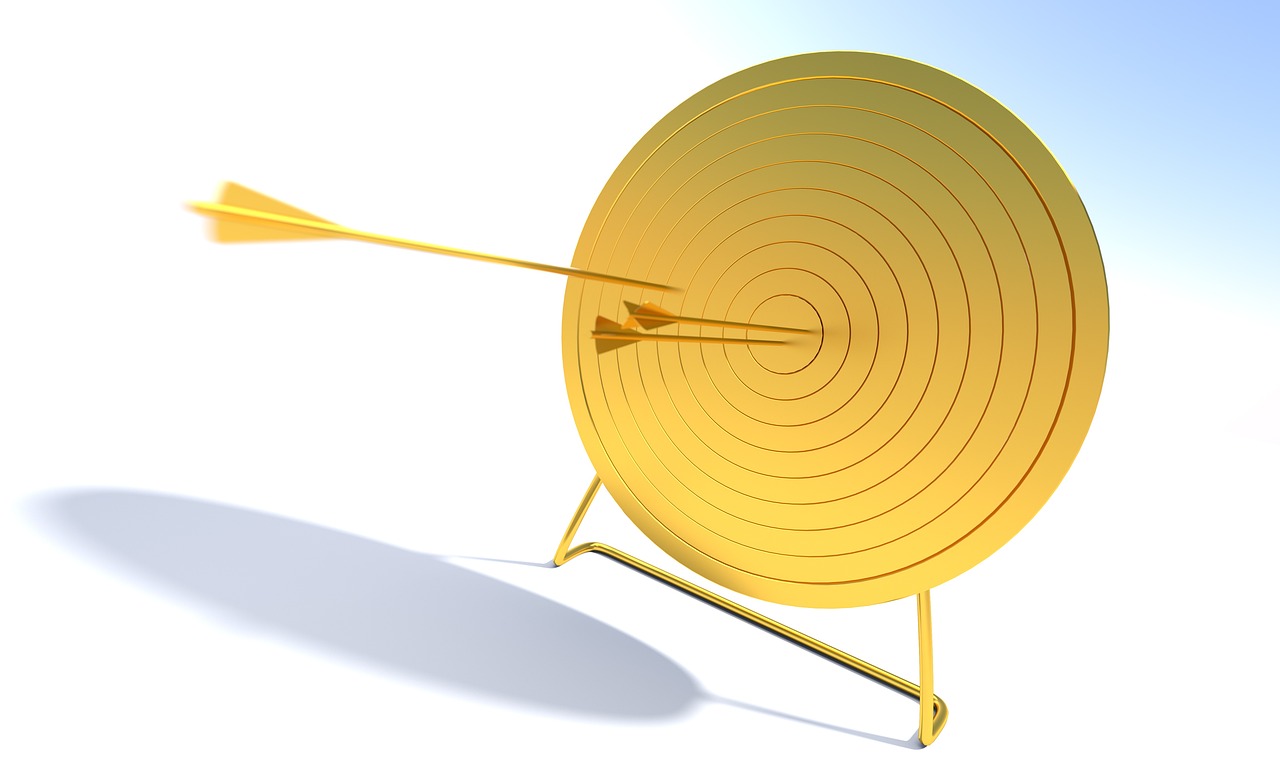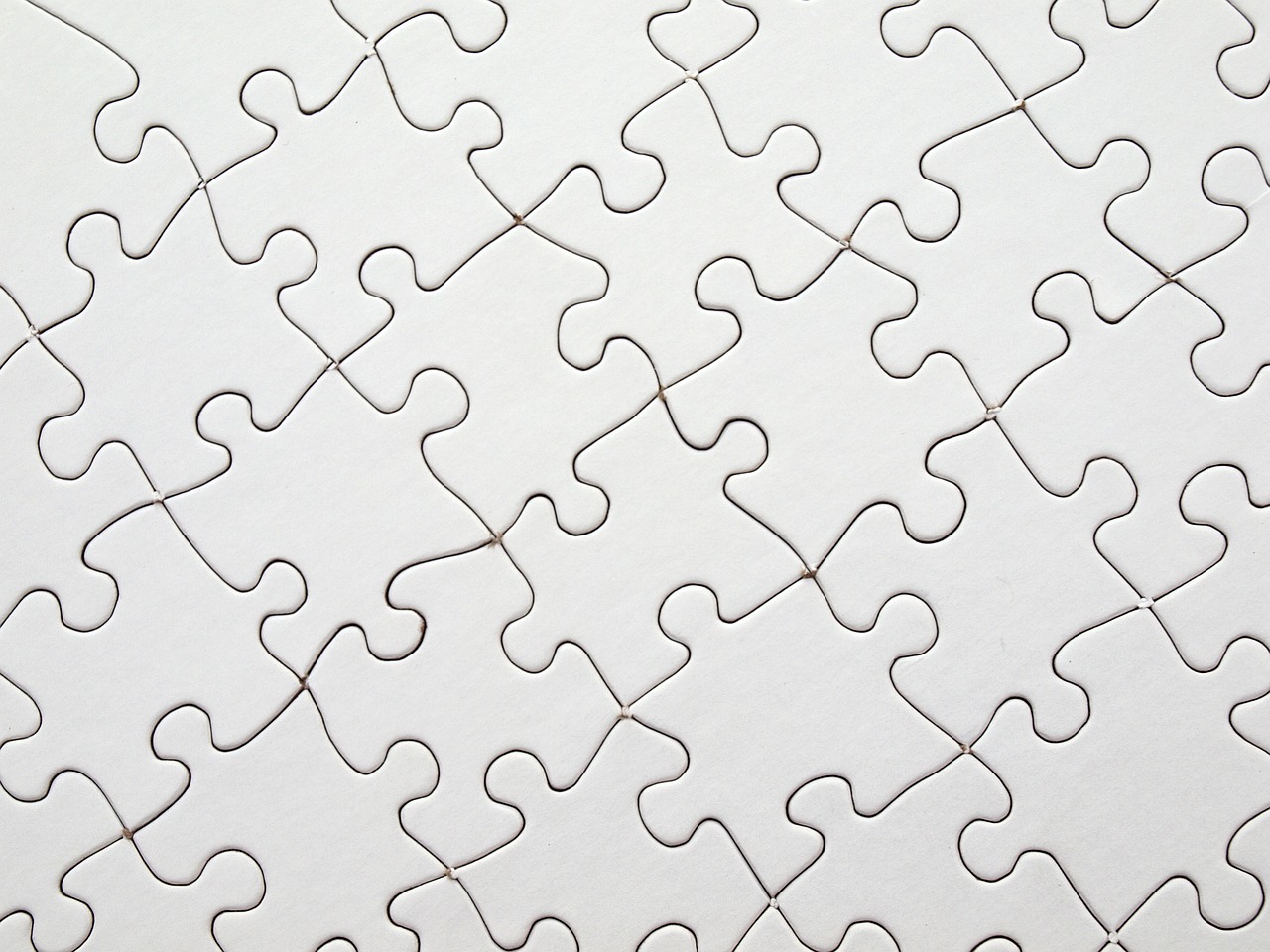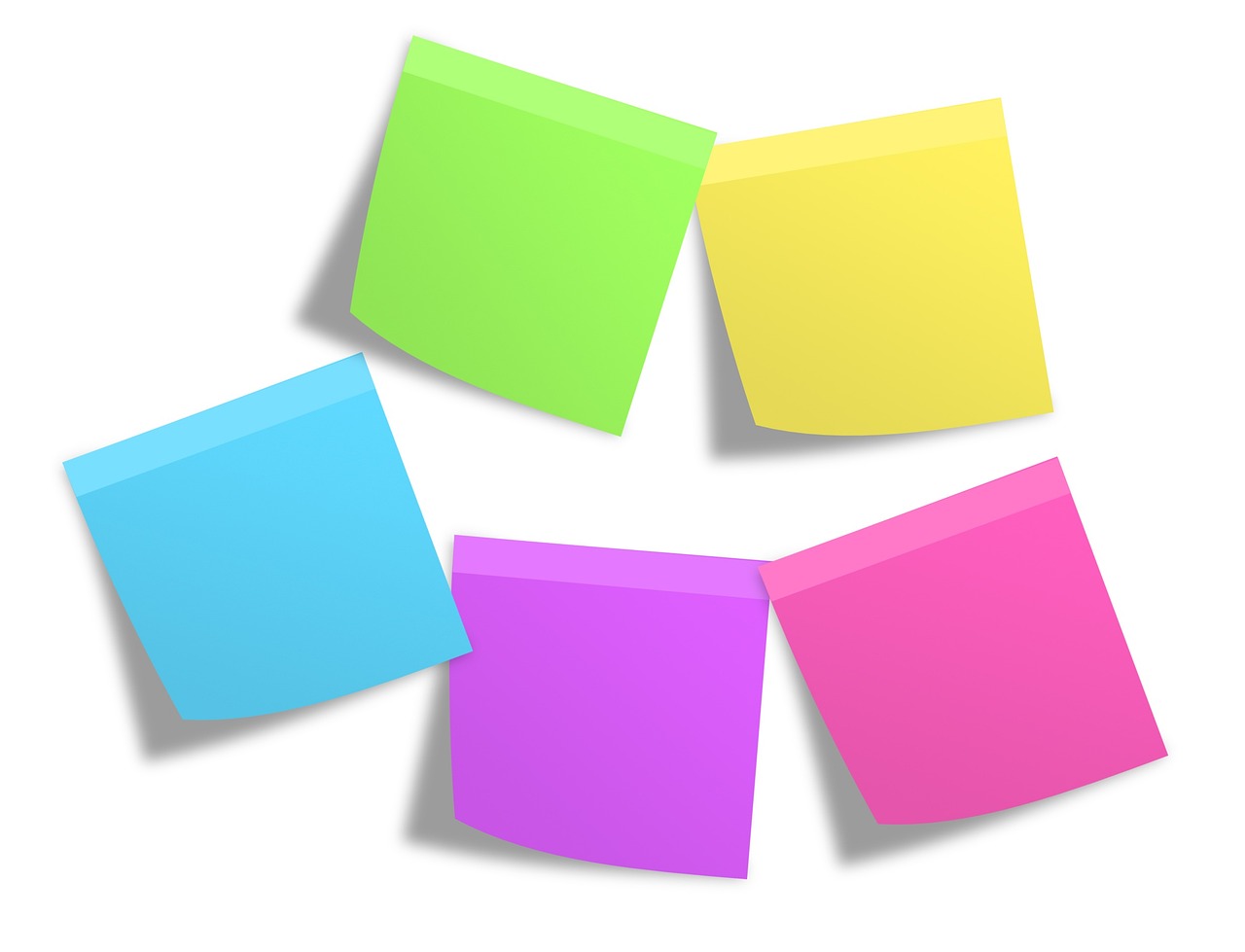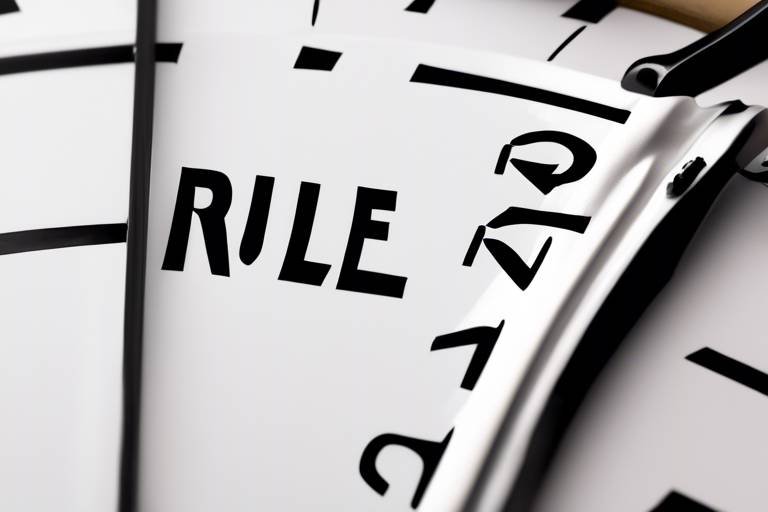How to Optimize Your Task List for Better Efficiency
When it comes to optimizing your task list for better efficiency, there are several key strategies and tips that can significantly improve your productivity and time management skills. By implementing these techniques, you can streamline your workflow, prioritize effectively, and ensure that you stay on top of your responsibilities without feeling overwhelmed.
One of the first steps in optimizing your task list is to create clear categories for your tasks. By organizing your tasks into specific categories such as work, personal, and urgent, you can easily identify and address different types of tasks, making it easier to focus on what needs to be done at any given time.
Setting realistic deadlines for each task is crucial in preventing procrastination and ensuring timely completion of all responsibilities. Establishing achievable deadlines not only helps you stay on track but also provides a sense of urgency that can motivate you to work efficiently.
Utilizing task management tools can also greatly enhance your task list optimization. Digital apps like Trello, Asana, or Todoist offer features that streamline task organization, scheduling, and tracking, making it easier to manage your tasks and stay organized.
Implementing the Eisenhower Matrix is another effective technique for prioritizing tasks based on urgency and importance. By focusing on high-priority tasks and delegating or eliminating less critical ones, you can ensure that you are dedicating your time and energy to the most important responsibilities.
One simple yet powerful rule to follow is the Two-Minute Rule, which suggests tackling tasks that can be completed in two minutes or less immediately. By addressing these quick tasks right away, you can prevent them from piling up and consuming unnecessary time and mental energy.
Regularly reviewing and updating your task list is essential for ongoing optimization. By scheduling routine reviews to add new tasks, adjust priorities, and remove completed or irrelevant items, you can ensure that your task list remains up to date and reflective of your current workload.
Avoiding multitasking is key to enhancing focus, productivity, and the quality of your work. By concentrating on one task at a time, you can give your full attention to each task, leading to more efficient completion and better results overall.
Lastly, it's important to recognize when tasks can be effectively delegated to others. Delegating tasks that can be handled by someone else not only frees up your time for more critical responsibilities but also improves the overall efficiency of your task list.

Create Clear Categories
Tips and strategies for organizing and prioritizing tasks to improve productivity and time management.
When it comes to optimizing your task list for better efficiency, creating clear categories is essential. By organizing your tasks into specific categories such as work, personal, and urgent, you can easily identify and address different types of tasks. This categorization allows you to focus on one category at a time, preventing overwhelm and ensuring that each task gets the attention it deserves.

Set Realistic Deadlines
Efficiency is the key to success in managing tasks effectively. By organizing and prioritizing your to-do list efficiently, you can improve productivity and time management significantly. Let's delve into some tips and strategies to optimize your task list and enhance your overall efficiency.
When it comes to managing tasks, creating clear categories is essential. By organizing your tasks into specific categories such as work, personal, and urgent, you can easily identify and address different types of tasks. This categorization helps in focusing on specific areas and ensures that no task gets overlooked or neglected.
Setting realistic deadlines is crucial for effective task management. It is important to establish achievable deadlines for each task to prevent procrastination and ensure timely completion of all responsibilities. By breaking down larger tasks into smaller, manageable deadlines, you can stay on track and avoid feeling overwhelmed.
To streamline your task organization and scheduling, it is beneficial to explore digital task management tools such as Trello, Asana, or Todoist. These tools offer features that can help you track your tasks, set reminders, and collaborate with team members efficiently. By utilizing these tools, you can enhance your productivity and stay organized.
The Eisenhower Matrix is a powerful tool for prioritizing tasks based on their urgency and importance. By categorizing tasks into four quadrants - urgent and important, important but not urgent, urgent but not important, and neither urgent nor important - you can focus on high-priority tasks and delegate or eliminate less critical ones. This method helps in making informed decisions about task prioritization.
One effective strategy to prevent tasks from piling up is to follow the Two-Minute Rule. This rule suggests that if a task can be completed in two minutes or less, it should be done immediately. By tackling these quick tasks right away, you can avoid unnecessary clutter in your task list and save time that would otherwise be spent procrastinating.
Consistent review and updates of your task list are essential for ongoing optimization. Schedule regular check-ins to add new tasks, adjust priorities, and remove completed or irrelevant items. By keeping your task list up to date, you can ensure that you are always working on the most important and relevant tasks at any given time.
While multitasking may seem like a way to get more done in less time, it often leads to decreased focus and productivity. Instead of dividing your attention among multiple tasks simultaneously, concentrate on one task at a time. By focusing on a single task, you can enhance the quality of your work, complete tasks more efficiently, and reduce the risk of errors.
Recognizing when to delegate tasks is a crucial skill in optimizing your task list. Some tasks can be effectively delegated to others, freeing up your time for more critical responsibilities. By delegating tasks that others can handle competently, you can improve overall efficiency and ensure that each task is completed by the most suitable individual.

Utilize Task Management Tools
When it comes to optimizing your task list for better efficiency, one of the most valuable strategies is to . These digital apps and platforms can revolutionize the way you organize, schedule, and track your tasks, ultimately leading to increased productivity and time management.
Imagine having all your tasks neatly laid out in one place, easily accessible at any time. Task management tools like Trello, Asana, or Todoist offer features such as task categorization, due date setting, priority levels, and collaboration options, making it a breeze to stay on top of your responsibilities.
By utilizing these tools, you can create detailed task lists with clear descriptions, deadlines, and subtasks, ensuring that nothing slips through the cracks. The ability to set reminders and notifications helps you stay focused and motivated, guiding you through your daily agenda with precision.
Moreover, task management tools often provide visual representations of your tasks, such as kanban boards or Gantt charts, allowing you to see your progress at a glance and make adjustments as needed. These visual aids can be incredibly beneficial in understanding the big picture of your workload and identifying areas for improvement.
Furthermore, the collaborative features of these tools enable team members to work together seamlessly, sharing updates, files, and comments within the platform. This fosters effective communication and ensures that everyone is aligned on project goals and timelines.
Overall, incorporating task management tools into your workflow can be a game-changer in terms of efficiency and organization. By harnessing the power of technology to streamline your task list, you can free up mental space, reduce stress, and enhance your overall productivity.

Implement the Eisenhower Matrix
The Eisenhower Matrix, also known as the Urgent-Important Matrix, is a powerful tool for prioritizing tasks based on their level of urgency and importance. This method categorizes tasks into four quadrants:
| Quadrant | Description |
|---|---|
| Quadrant 1: Urgent and Important | Tasks that require immediate attention and are crucial to your goals and well-being. These tasks should be handled first. |
| Quadrant 2: Important but Not Urgent | Tasks that contribute to your long-term goals and success but do not require immediate action. Schedule time for these tasks to prevent them from becoming urgent. |
| Quadrant 3: Urgent but Not Important | Tasks that demand immediate action but do not significantly contribute to your long-term objectives. Delegate these tasks if possible. |
| Quadrant 4: Not Urgent and Not Important | Tasks that are time-wasters and distractions. Eliminate or minimize these tasks to focus on what truly matters. |
By using the Eisenhower Matrix, you can gain clarity on which tasks to prioritize, delegate, schedule, or eliminate. This method helps you focus your time and energy on tasks that align with your goals and values, leading to improved productivity and efficiency in managing your task list.

Practice the Two-Minute Rule
When it comes to optimizing your task list for better efficiency, one valuable strategy to implement is the Two-Minute Rule. This rule suggests that any task that can be completed in two minutes or less should be done immediately. By addressing these quick tasks promptly, you prevent them from accumulating and becoming a source of distraction or procrastination.
Imagine your task list as a garden full of various plants. Some tasks are like weeds that can quickly spread if not removed promptly. The Two-Minute Rule acts as your gardening tool, allowing you to pluck out these small tasks before they overtake the garden and require more time and effort to manage.
By adhering to the Two-Minute Rule, you not only maintain a sense of accomplishment by swiftly checking off items from your list but also free up mental space for more significant tasks that require deeper focus and concentration. It's a simple yet powerful technique to keep your productivity flowing smoothly without getting bogged down by minor to-dos.
Moreover, the Two-Minute Rule serves as a reminder that not all tasks need to be complex or time-consuming. Sometimes, the most impactful actions are the quick ones that contribute to the overall progress of your day. It encourages a proactive approach to task management, where efficiency and effectiveness are prioritized over mere busyness.
Picture your task list as a puzzle, with each task representing a piece that needs to fit into the bigger picture of your day. The Two-Minute Rule acts as the corner pieces of the puzzle, providing a solid foundation for building momentum and keeping the puzzle of your tasks organized and manageable.
By embracing the Two-Minute Rule as a regular practice in your task management routine, you cultivate a habit of swift decision-making and action-taking. It helps you stay on top of your responsibilities and prevents small tasks from snowballing into overwhelming obstacles that hinder your overall productivity.

Regularly Review and Update
Regularly reviewing and updating your task list is crucial for maintaining efficiency and productivity. By scheduling periodic reviews, you can ensure that your tasks are up-to-date and aligned with your current priorities. This process allows you to add new tasks that may have emerged, adjust the importance of existing tasks based on changing circumstances, and remove completed or irrelevant items to declutter your list.
Think of your task list as a living document that needs constant care and attention. Just like tending to a garden, regular reviews help you weed out tasks that no longer serve a purpose and nurture those that contribute to your overall goals. By staying proactive in managing your task list, you can prevent overwhelm and stay focused on what truly matters.
During your review sessions, take the time to reflect on your progress and identify any bottlenecks or recurring issues. Are there tasks that keep getting pushed back? Is there a particular category that seems to always be neglected? By analyzing these patterns, you can fine-tune your task list structure and workflow for better efficiency.
Consider setting aside dedicated time each week or month to review and update your task list. Treat it as a non-negotiable appointment with yourself to ensure that you stay on top of your responsibilities and commitments. By making this practice a habit, you'll establish a rhythm that supports your productivity and helps you navigate through your tasks with clarity and purpose.
Remember, a well-organized and regularly updated task list is like a compass that guides you through your daily journey. It provides direction, clarity, and a sense of accomplishment as you tick off items and move closer to your goals. Embrace the process of reviewing and updating your task list as a powerful tool for optimizing your efficiency and mastering your time management skills.

Avoid Multitasking
Avoiding multitasking is essential for enhancing productivity and the quality of your work. When you focus on one task at a time, you can dedicate your full attention and energy to it, leading to more efficient outcomes. Imagine trying to juggle multiple tasks simultaneously; it's like trying to juggle too many balls at once – eventually, one will drop, causing delays and mistakes.
Research has shown that multitasking can actually decrease productivity by up to 40% as it divides your attention and can lead to errors or incomplete tasks. It's like trying to listen to two different songs at the same time – you end up missing the essence of both. By concentrating on a single task, you can complete it more effectively and move on to the next one with a clearer mind.
Moreover, multitasking can increase stress levels and reduce the overall quality of your work. It's akin to cooking multiple dishes simultaneously – you might burn one while undercooking another. By focusing on one task at a time, you can maintain a sense of control and achieve better results without the added pressure of juggling numerous responsibilities.
Instead of spreading yourself thin across various tasks, prioritize your to-do list and tackle each item sequentially. This approach allows you to give your full attention to each task, leading to improved efficiency and a sense of accomplishment. Think of it as painting a picture – you wouldn't try to paint multiple canvases simultaneously; you focus on one to create a masterpiece.
In conclusion, avoiding multitasking is a key strategy for optimizing your task list and boosting productivity. By focusing on one task at a time, you can work more efficiently, produce higher-quality results, and reduce stress levels. Remember, it's better to excel in one task than to struggle with many. So, set aside distractions, prioritize your tasks, and watch your productivity soar.

Delegate When Necessary
Delegating tasks when necessary is a crucial skill in optimizing your task list for better efficiency. Just like a captain assigning different crew members to handle specific ship duties, delegating allows you to distribute workload effectively and focus on tasks that require your expertise and attention. When overwhelmed with a mountain of tasks, identifying responsibilities that can be passed on to capable team members or colleagues can lighten your load and ensure tasks are completed efficiently.
Frequently Asked Questions
- What are the benefits of organizing tasks into clear categories?
Organizing tasks into clear categories helps you easily distinguish between different types of tasks, such as work-related, personal, or urgent tasks. This organization allows you to focus on specific areas at a time, leading to increased efficiency and productivity.
- How can setting realistic deadlines improve task management?
Setting realistic deadlines for each task helps prevent procrastination and ensures timely completion of responsibilities. By establishing achievable deadlines, you can effectively prioritize tasks and allocate your time efficiently, leading to better time management.
- Why is it important to avoid multitasking?
Avoiding multitasking allows you to concentrate on one task at a time, enhancing your focus, productivity, and the quality of your work. Dividing your attention among multiple tasks can lead to decreased efficiency and increased errors, making it crucial to focus on one task to maximize productivity.
- How can task management tools like Trello or Asana help in improving efficiency?
Task management tools like Trello, Asana, or Todoist provide features for organizing, scheduling, and tracking tasks in a streamlined manner. By utilizing these digital apps, you can centralize your task list, collaborate with team members, set reminders, and track progress, ultimately enhancing efficiency and productivity.



















